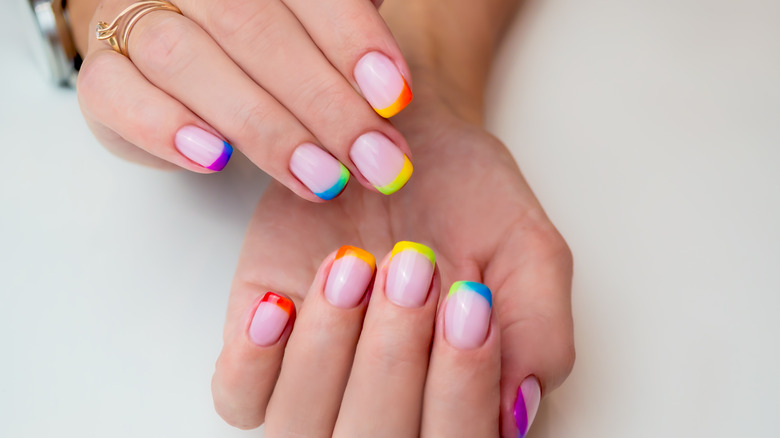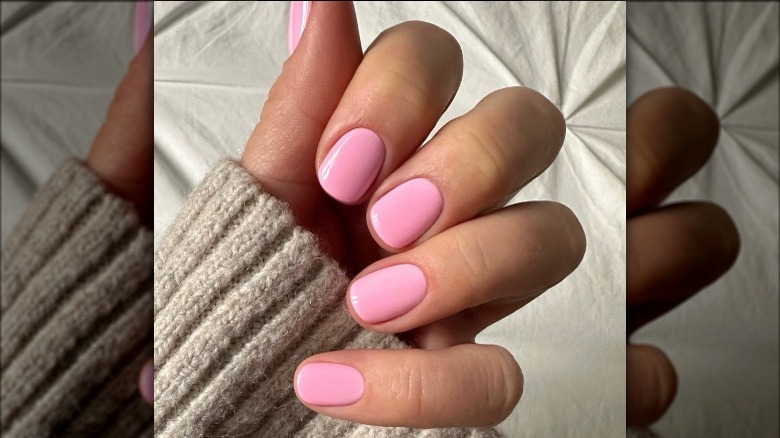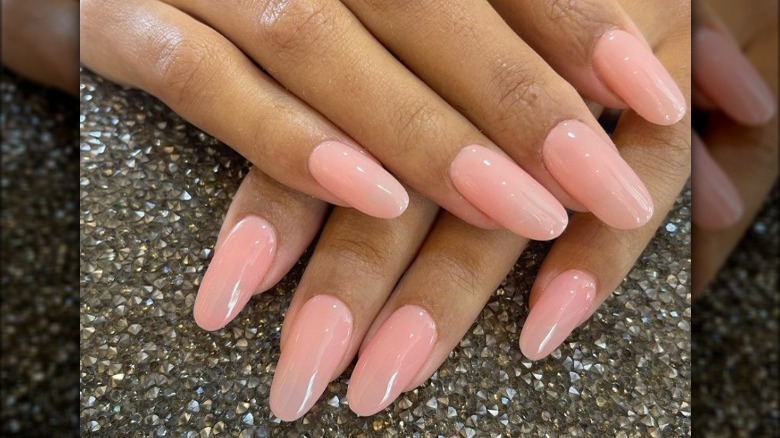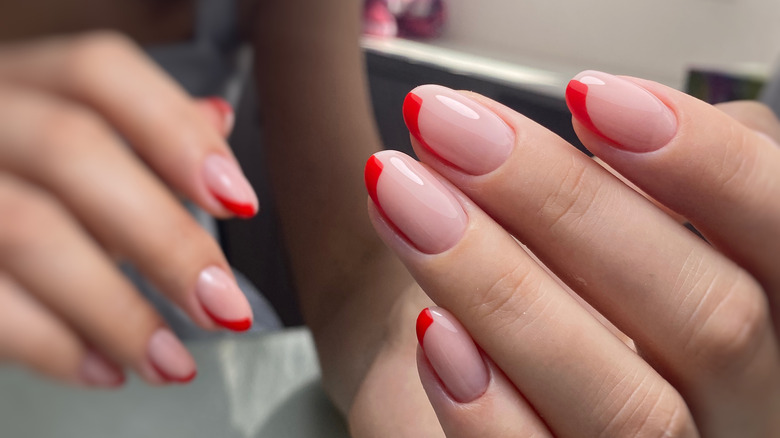How Serious Are The Health Risks Of UV Gel Manicures?
Gel manicures hold major appeal and for good reason. They last for a long time, anywhere between two to four weeks, with almost no chipping, unlike normal nail polish. The manicure also helps nails grow long, since the gel coating itself is strong and there's less risk of breakage, as is the case when natural nails grow out and can sometimes become too brittle. Because they're gel, they're flexible. Sounds like the perfect solution to long-lasting, stunning nails.
How is a gel manicure different from a traditional manicure? While regular nail polish dries on its own (but chips quickly), gel polish requires a UV or LED lamp to cure properly. It won't dry correctly without one. The consistency itself is different from that of regular polish. "Gel polishes are comprised of stronger ingredients that grasp the nail tighter than traditional lacquers and are strong enough to stand up to daily wear and tear without chipping," Rita Remark of Essie told Teen Vogue. While there are some serious checks in the plus column when it comes to gel manicures, there are actually some notable health risks that must be mentioned, and a few ways to mitigate them.
Why can gel manicures pose health risks?
The problem with gel manicures is their curing process. Since the gel itself cannot properly dry without a UV or LED light, we have to keep our hands under these lights every time we get a fresh manicure. The drying process typically takes ten minutes, and a consistent manicure routine means that approximately one to two times every month, the skin on our hands is getting exposed to UV light.
This light has the potential to be harmful. UV lights cause premature aging and may increase the likelihood of cancer, Dr. Chris Adigun told The New York Times. Part of the challenge with gel manicures is how frequently a devoted client has to come in contact with the UV lights. Dermatologist Dr. Anna Guanche told Refinery29: "As a dermatologist I have always known that UV exposure up close on a regular basis is not good for the skin and can lead to mutations." Dr. Guanche said that these mutations can, in some cases, lead to cancer. But the findings are still in their early stages.
How serious are the risks of a gel manicure?
Research isn't conclusive enough to say with certainty that UV lights are dangerous, but that's not to say that they're harmless. Dr. Vivian Valenty told Refinery29 that in 2017, the FDA declared that UV lights were "low risk," but there still was some risk involved.
Dr. Chris Adigun told The New York Times that study results were too scant as of yet. "We can't quantify the risk," Dr. Adigun said. The Times pointed to a study conducted where human and mouse cells were exposed to a UV light for 20 minutes. Some of the cells died, while other cells came away with damaged DNA. A co-author of the study, Dr. Maria Zhivagui, noted that the patterns were similar to cells in cases of melanoma. However, these were exposed cells that didn't have the barrier of dead skin that our hands have. Dr. Zhivagui noted that there wasn't enough evidence that UV lamps are carcinogenic.
When consulted about the growing concern around UV light, manicurist Deborah Lippmann told Refinery29: "I don't think people will stop this service altogether, but this will definitely lead to a rise in the interest of alternative methods, as people explore other ways to achieve this look in a safer, healthier way." So what are those healthier ways?
How to still get a good gel manicure?
What are safe ways to still get gel manicures? There are a few options. One is to put SPF on your hands before a manicure. This can sometimes create problems for the manicure itself, though, so it might not be a viable plan B. "You can use SPF 30 or higher, but some manicurists feel it interferes with the gel smoothness or adherence," dermatologist Dr. Anna Guanche told Refinery29. Another option is wearing fingerless gloves with anti-UV protection, so that significantly less skin is exposed during the curing process. Another option that gets offered is the use of LED lights for curing gels, but Dr. Chris Adigun told The New York Times that there can be significant UV light in LED lights.
Another route is to try different manicures. Consider regular nail polish or opt for a dip powder manicure, or SNS nails, where nails are painted at first with a bonder and then dipped into acrylic powder. For a time, the technique got a bad rap because of the unhygienic practice of using one pot of acrylic powder for several clients. Now, a nail technician will typically just brush the powder onto the nail. The best part about dip powder nails is that there is no UV light needed to cure the nails. Some technicians may offer a gel top coat, but you can opt out of this and still have durable nails.



